RNA m6A modification sensitizes an oncogenic mRNA-Protein complex to heat stress via reverse regulating the fate of its reader
Human papillomavirus (HPV) is one of the four leading carcinogenic pathogens. In addition to causing 97% of cervical cancers, a significant proportion of the neoplasms of anus, vulva, vagina, penis as well as head and neck squamous cell carcinoma are also caused by HPV infection, leading to serious public health concern with substantial economic burden [1].Therapeutic vaccines or gene therapy are thought to be effective in eliminating HPV infection but display relatively low accessibility and affordability, especially in lower-income population. Furthermore, HPV preventive vaccines are not able to eliminate pre-existing HPV infections and related cancers. Therefore, other efficient and accessible treatment strategies for HPV-associated malignancies are urgently needed. The viral early protein 7 (E7) is one of the major drivers of HPV-induced carcinogenesis, making it an attractive target for treating HPV-associated cancers [2]. Recently, a research team led by Professors Chih-Hung Hsu, CHENG Xiaodong and Hua Naranmandura from the Zhejiang University School of Medicine revealed that heat treatment could selectively destabilize HPV E7 mRNA in a N6-methyladenosine (m6A) dependent manner through an m6A reader protein IGF2BP1. Their findings are published as a research article entitled “m6A Modification Confers Thermal Vulnerability to HPV E7 Oncotranscripts via Reverse Regulation of its Reader Protein IGF2BP1 upon Heat Stress” in the prestige journal Cell Reports. Their original findings not only reveal a thermal vulnerability for E7 mRNA-IGF2BP1 oncogenic complex as a targetable susceptibility in HPV-associated cancers, but also highlight a role of m6A modified RNA in reversely regulating the fate of its reader. And this article was selected as the Cover story for Volume 41 Issue 4 of Cell Reports published on October 25, 2022.
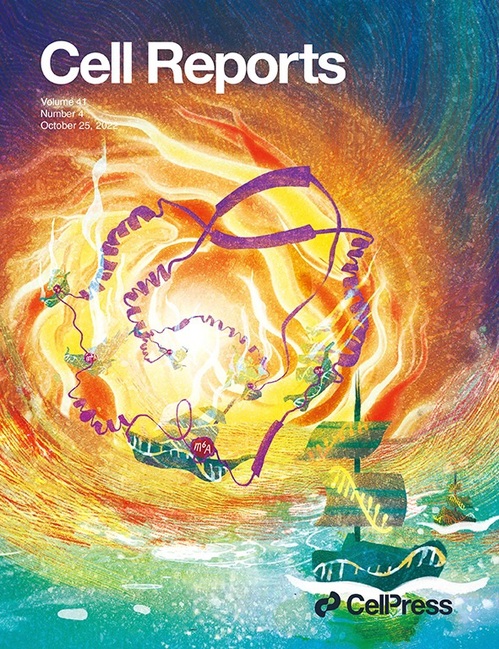
Cover story for Volume 41 Issue 4 of Cell Reports
“On the cover: In this issue, Wang et al. show the thermal vulnerability of m6A E7-IGF2BP1 complex. The cover image depicts the battle of Chibi, a historic naval battle fought on the Yangtze River between southern allied forces and northern invaders in 208 AD. Through ship anchors (m6A modification), the giant iron chains (IGF2BP1) bound to and stabilized northern warships (E7 mRNA), whereas the iron-chain-tied warships (m6A E7-IGF2BP1 complex) became vulnerable to and destroyed by fire attack (heat treatment). Artwork by WEI Wanning.”
The m6A modification is co-transcriptionally deposited by METTL3/METTL14 methyltransferase complex and removed by FTO/ALKBH5 demethylase [3]. Thus, the dynamic and adjustable nature makes m6A a key regulator in RNA metabolism, and the fate of m6A-modified RNA is modulated by m6A readers [3].Since m6A modification affects affinity between RNA and its interacting proteins, it is possible that besides the well-documented m6A binding proteins-mediated fate regulation of m6A-modified RNA, m6A modification may also provide the potential for m6A-modified RNA to regulate its interacting proteins.
Hyperthermia is used experimentally for cancer treatment, and accumulating evidence has shown favorable effects of hyperthermia/fever through affecting the properties of oncogenic proteins.Previously, the research group has reported specific thermal vulnerabilities of leukemic oncofusion proteins and the RNA-dependent RNA polymerase (NSP12) of SARS-CoV-2, which showed clinical potential of hyperthermia in dealing with drug-resistant AML and the COVID-19 pandemic [4,5]. In this study, they found that rather than directly affecting E7 protein, hyperthermia selectively destabilizes E7 mRNA through IGF2BP1, which recognizes m6A modifications on E7 mRNA. Remarkably, in the absence of E7 mRNA, IGF2BP1 is insensitive to hyperthermia revealing a new type of mutual regulation between m6A RNA and its reader, and suggesting a clinical potential of hyperthermia in HPV-associated malignancies (Figure 1).
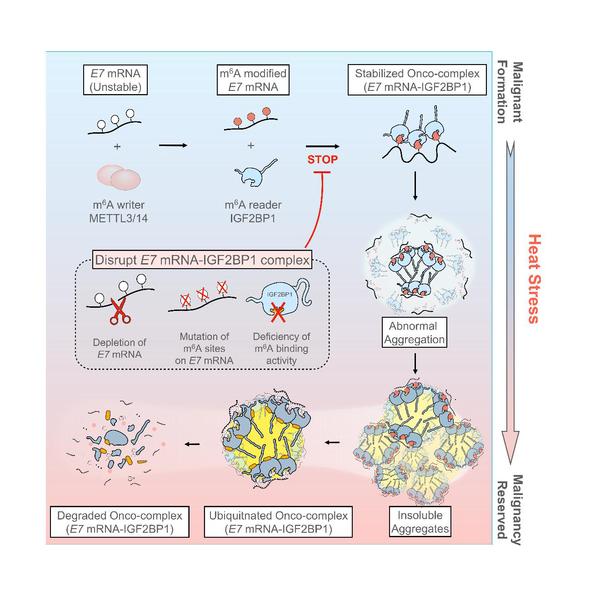
Figure 1. The working model of the mechanism by which hyperthermia destabilizes m6A E7 mRNA-IGF2BP1 oncotrranscript complex.
Initially, the authors found that hyperthermia robustly destabilizes oncogenic E7 mRNA in cell-based assays, zebrafish and mice models, and clinical samples (Figure 2).
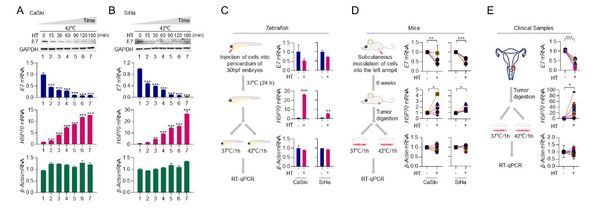
Figure 2. Heat stress destabilizes E7 mRNA in multiple model systems.
Next, they revealed that m6A modification regulates the stability of HPV E7 mRNA, and mutation of specific m6A sites on E7 mRNA triggers resistance to heat treatment, suggesting that heat stress regulates E7 mRNA stability in m6A dependent manner (Figure 3).
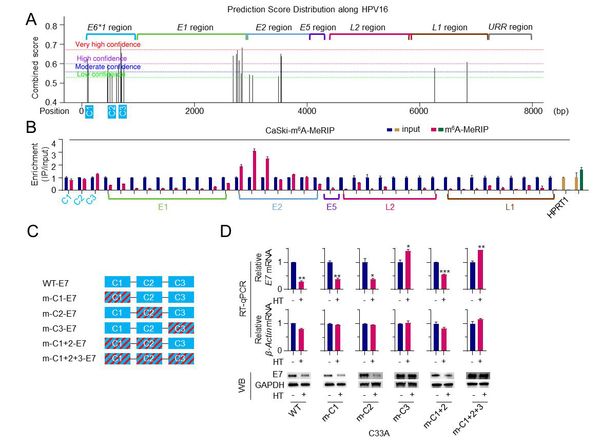
Figure 3. Heat stress regulates E7 mRNA stability in an m6A dependent manner.
Mechanistically, Hyperthermia promotes microscopically visible heat-inducible granules of (E7 mRNA)-IGF2BP1 complex, which are resolved by the ubiquitin-proteasome system. Disruption of (E7 mRNA)-IGF2BP1 complex results in hyperthermia insensitivity of IGF2BP1 and E7 mRNA, indicating (E7 mRNA)-IGF2BP1 complex as a specific target for hyperthermia (Figure 4).
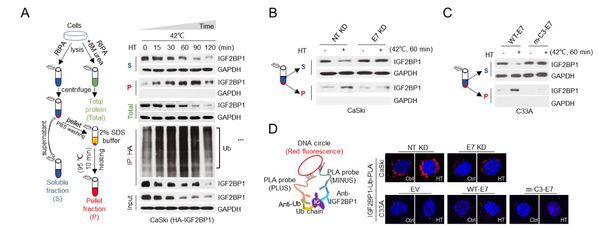
Figure 4. Heat treatment specifically destabilizes oncogenic E7 mRNA-IGF2BP1 complex.
Importantly, the research group found that a daily short-term (30 min) mild heat treatment was sufficient to maintain lowered levels of E7 mRNA as well as its E7 protein product and show remarkable malignancy suppressing effects in multiple models (Figure 5), which suggest a strong clinical potential of hyperthermia in dealing with HPV related neoplasms.
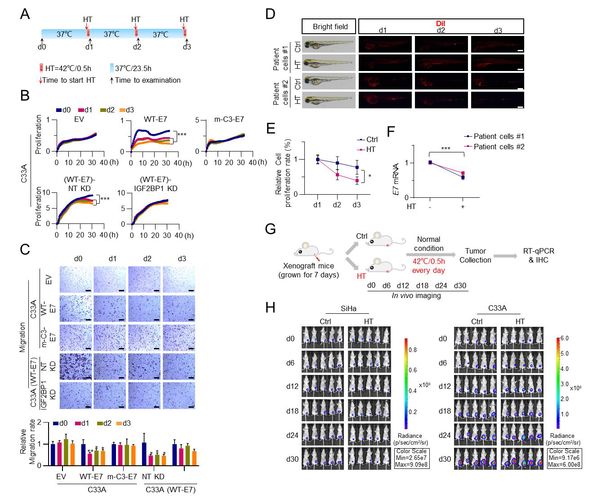
Figure 5. Daily heat treatment downregulates E7 and attenuates tumorigenic potential of HPV-positive cells.
Taken together, their original results not only reveal a mechanism by which m6A RNA and its reader exerted mutual regulation of each other, but also suggest a non-invasive, cost-effective, and facile hyperthermia-involved therapeutic strategy for HPV-associated cancers.
More information: WANG Lingfang (Postdoctoral Fellow), ZHAn Guankai (PhD candidate) and Yasen Maimaitiyiming (Postdoctoral Fellow) are co-first authors of this study. This team has also received support and help from other parties, including Professors GUAN Minxin, YANG Xiaohang, MA Jun, XU Peng-Fei, HE Feng, LIANG Hongqing, GE Wanzhong, and ZHUO Wei from Zhejiang University School of Medicine, and Professors XIE Xing and LV Weiguo of Women’s Hospital of Zhejiang University School of Medicine, and Professors GU Zhen and LI Hongjun from College of Pharmaceutical Sciences, Zhejiang University.
References:
[1]. Martel, C. de, Georges, D., Bray, F., Ferlay, J., and Clifford, G.M. (2020). Global burden of cancer attributable to infections in 2018: a worldwide incidence analysis. The Lancet Global Health 8, e180-e190. https://doi.org/10.1016/S2214-109X(19)30488-7.
[2]. Nagarsheth NB, Norberg SM, Sinkoe AL, et al. TCR-engineered T cells targeting E7 for patients with metastatic HPV-associated epithelial cancers. Nat Med. 2021;27(3):419-425. doi:10.1038/s41591-020-01225-1
[3]. Yang, Y., Hsu, P.J., Chen, Y.-S., and Yang, Y.-G. (2018). Dynamic transcriptomic m6A decoration: writers, erasers, readers and functions in RNA metabolism. Cell research 28, 616-624. https://doi.org/10.1038/s41422-018-0040-8.
[4]. Maimaitiyiming Y, Yang T, Wang QQ, et al. Heat Treatment Promotes Ubiquitin-Mediated Proteolysis of SARS-CoV-2 RNA Polymerase and Decreases Viral Load. Research (Wash D C). 2022;2022:9802969. doi:10.34133/2022/9802969
[5]. Maimaitiyiming Y, Wang QQ, Yang C, et al. Hyperthermia Selectively Destabilizes Oncogenic Fusion Proteins. Blood Cancer Discov. 2021;2(4):388-401. doi:10.1158/2643-3230.BCD-20-0188
Source: The research teams led by Prof. Chih-Hung Hsu, Prof. CHENG Xiaodong, and Prof. Hua Naranmandura, Zhejiang University School of Medicine
Image credit: Cell Reports